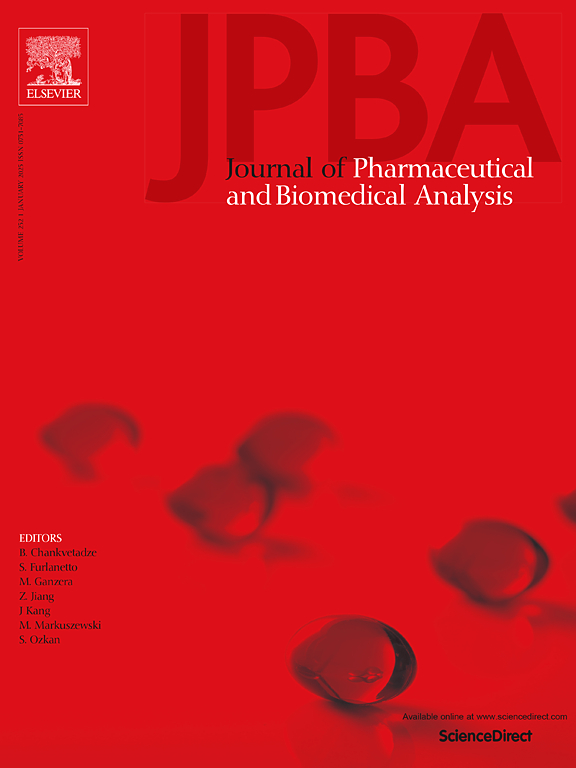Machine learning enabled protein secondary structure characterization using drop-coating deposition Raman spectroscopy
IF 3.1
3区 医学
Q2 CHEMISTRY, ANALYTICAL
Journal of pharmaceutical and biomedical analysis
Pub Date : 2025-02-25
DOI:10.1016/j.jpba.2025.116762
引用次数: 0
Abstract
Protein structure characterization is critical for therapeutic protein drug development and production. Drop-coating deposition Raman (DCDR) spectroscopy offers rapid and cost-effective acquisition of vibrational spectral data characteristic of protein secondary structures. Amide I region (1600 −1700 cm−1) and amide II region (1500–1600 cm−1) of DCRD Raman spectra measured for model proteins of varying molecular size and structural distribution were first analyzed by peak fitting for their proportions of six secondary structure motifs: α-helices, 310-helices, β-sheets, turns (β-turns and γ-turns), bends, and random coil. The high spectral resolution and superior signal-to-noise of DCDR spectra made it possible to estimate all six structural motifs at accuracy comparable to X-ray crystallographic measurement. The ease of DCDR measurement was further explored by introducing machine learning algorithm to spectroscopic data analysis. Partial Least Squares (PLS) regression modeling was used as a machine learning tool to predict the protein secondary structural composition from the amide I band of model proteins. Once developed on a training sample set, the PLS model was tested by applying to a sample set that was not used previously for model development. Low prediction errors were achieved at 1.36 %, 0.78 %, 0.42 % 0.41 %, 0.81 %, and 0.52 %, respectively for the six structural component, α-Helix, β-Sheet, 310-helices, random, turns, and bends. The PLS model was further tested on an independent sample set that contains three IgG proteins. The proportion ofα-Helix, β-Sheet, 310-Helix were estimated with an error of 3.1 %, 2.3 % and 2.8 %, respectively.
利用滴涂沉积拉曼光谱进行机器学习,确定蛋白质二级结构特征
本文章由计算机程序翻译,如有差异,请以英文原文为准。
求助全文
约1分钟内获得全文
求助全文
来源期刊
CiteScore
6.70
自引率
5.90%
发文量
588
审稿时长
37 days
期刊介绍:
This journal is an international medium directed towards the needs of academic, clinical, government and industrial analysis by publishing original research reports and critical reviews on pharmaceutical and biomedical analysis. It covers the interdisciplinary aspects of analysis in the pharmaceutical, biomedical and clinical sciences, including developments in analytical methodology, instrumentation, computation and interpretation. Submissions on novel applications focusing on drug purity and stability studies, pharmacokinetics, therapeutic monitoring, metabolic profiling; drug-related aspects of analytical biochemistry and forensic toxicology; quality assurance in the pharmaceutical industry are also welcome.
Studies from areas of well established and poorly selective methods, such as UV-VIS spectrophotometry (including derivative and multi-wavelength measurements), basic electroanalytical (potentiometric, polarographic and voltammetric) methods, fluorimetry, flow-injection analysis, etc. are accepted for publication in exceptional cases only, if a unique and substantial advantage over presently known systems is demonstrated. The same applies to the assay of simple drug formulations by any kind of methods and the determination of drugs in biological samples based merely on spiked samples. Drug purity/stability studies should contain information on the structure elucidation of the impurities/degradants.

 求助内容:
求助内容: 应助结果提醒方式:
应助结果提醒方式:


